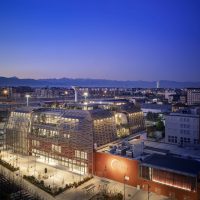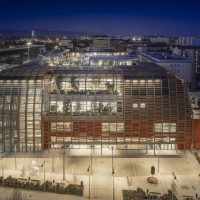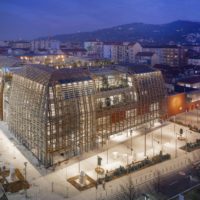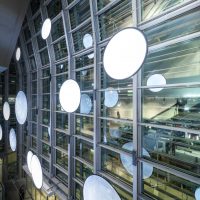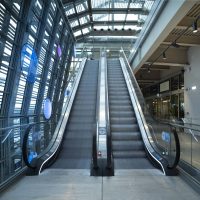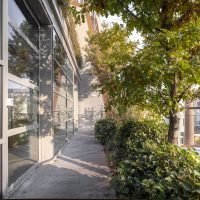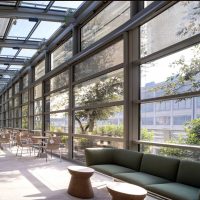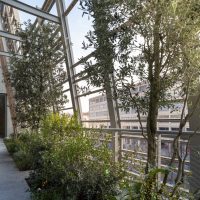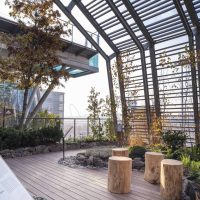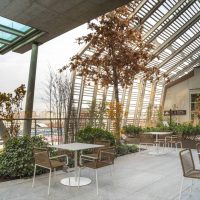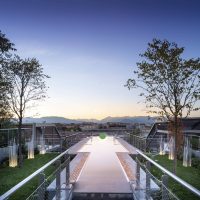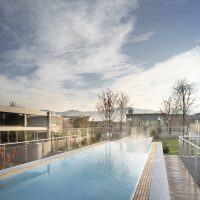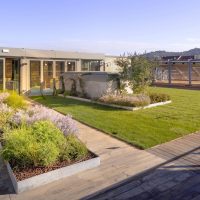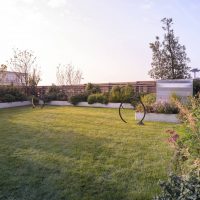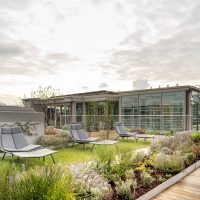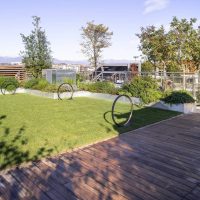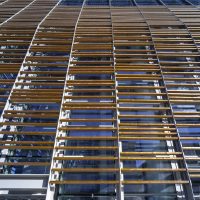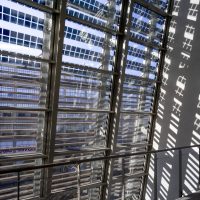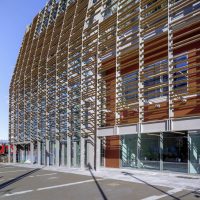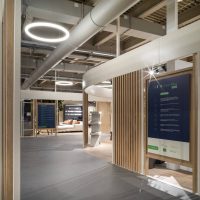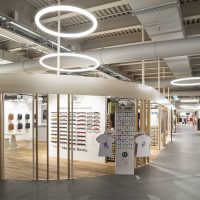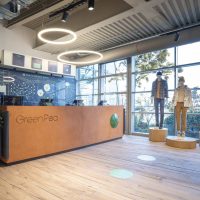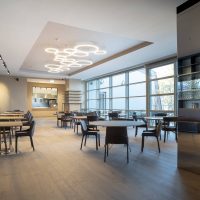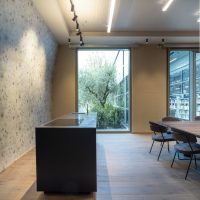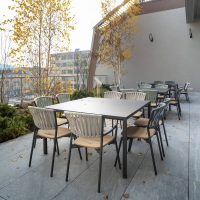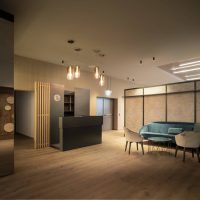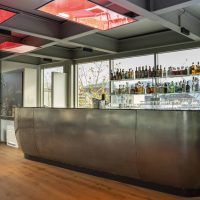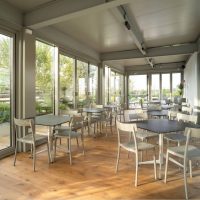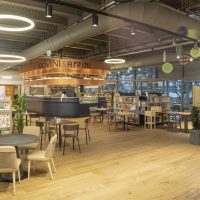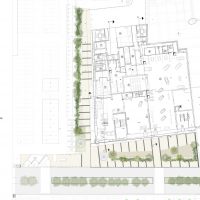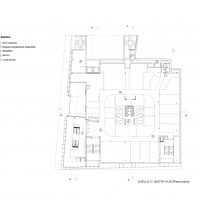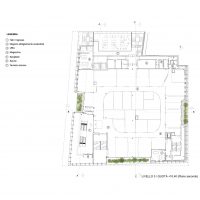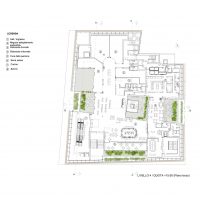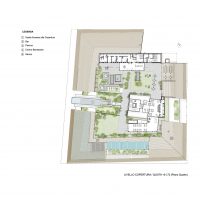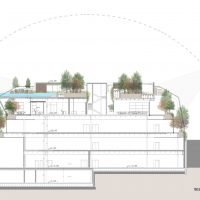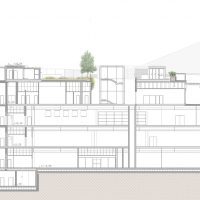Green Pea Retail Park
ACC Natural Architecture Cristiana Catino and Negozio Blu Architetti (Ambrosini, Gatti, Grometto), former designers of the first Eataly, conceived a symbolic architecture to give shape to the strategic vision of Green Pea: a highly sustainable building, a manifesto built with new technologies and natural materials to convey, through architecture, the idea of respect for the environment and harmony with nature.
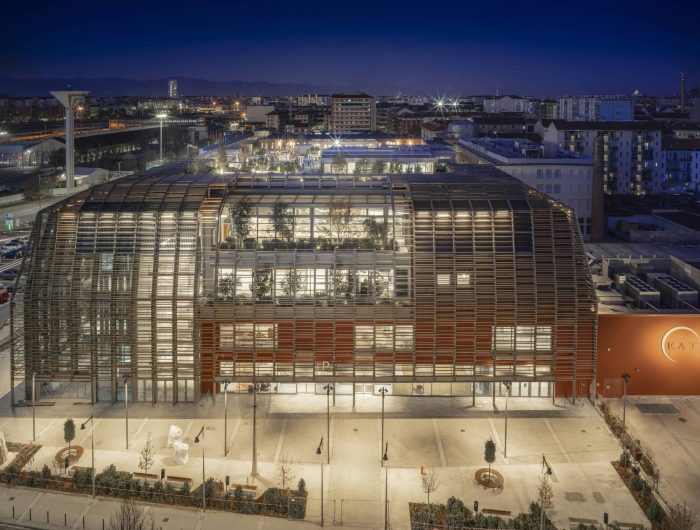
Photography by © Fabio Oggero
Commissioned by Eataly Real Estate, Green Pea is the final step in the redevelopment of the former Carpano Lingotto industrial area, a pivotal project in the regeneration process going on in the southern area of Turin.
Green Pea represents a new format of a retail park in the balance between architecture and environment, sustainability and beauty, quality and functionality. Defined by a plot of natural materials and permeated with light and green, it is a resilient and eco-sustainable building in every detail.
The organic volume, with a particular multifaceted shape, is spread over five floors for a height of 25 m in continuity with the existing building line and extending the façade of Eataly. The North-South orientation and the flared shape of the top floor are designed to adapt to climatic and environmental conditions so ensuring the best distribution of solar radiation. The external envelope consists of a double level of surfaces.
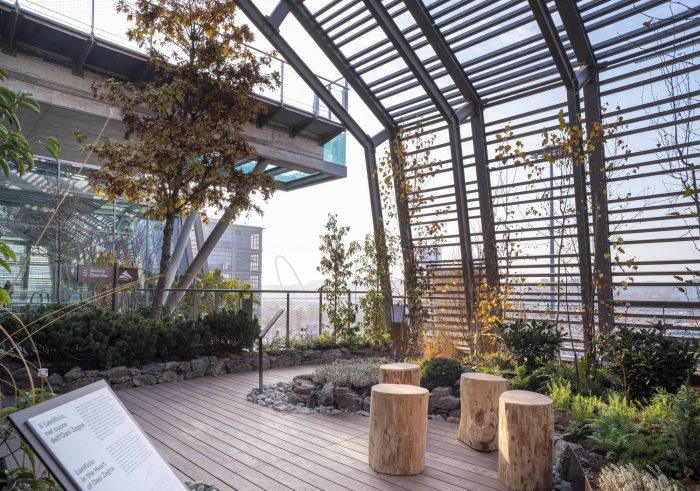
Photography by © Fabio Oggero
An external shell of wooden sunshade slats, supported by a steel rib, forms a technical “treillage” acting as a filter between inside and outside allowing the building to breathe, open up to the city and protect itself from the sun. The slats, heat-treated for external use and stiffened by a metal core, were made with fir wood recovered from the forests of the Trentino Val di Fiemme and Bellunese, destroyed by the October 2018 storm and traditionally used for the soundboards of musical instruments.
The internal shell, on the other hand, made up of infill of KVH solid wood sandwich panels, insulated with wood fiber and covered by sheet metal, is marked by large cuts in the glass surfaces flooding the interior spaces with natural light.
The load-bearing structure is made of steel, a 100% recyclable material, and is entirely dry-assembled by bolts. Greenery is inserted through the organic texture of the wooden façades, becoming part of the architecture. Green grows in the terraces where tall trees are planted in large tanks. The building thus appears as a natural organism that vibrates according to light and to the plants’ growth.
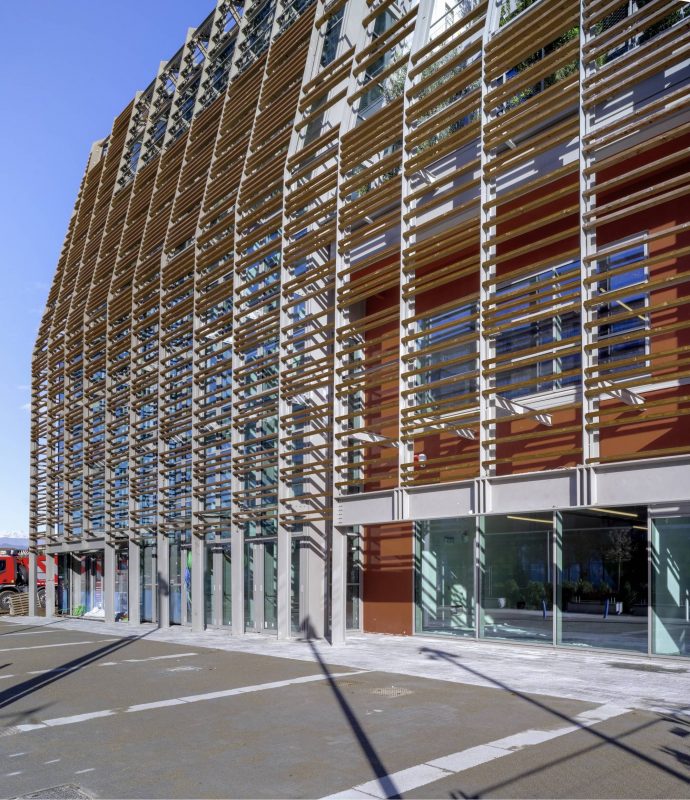
Photography by © Fabio Oggero
The vegetation was selected to be suitable for the climate and microclimate of the different façades, favoring native plants and Italian flora. Different natural environments start from the base of the building and meet in the large equipped garden roof, characterized by a bioclimatic greenhouse, that becomes the “fifth façade” of Green Pea.
In this part of the city, heavily industrialized during the twentieth century, green returns to play a central role and to be read in the urban fabric. In the interiors, a simple and clear concept involves all the senses and allows a complete experience, immersed in the identity of the Green Pea brand and its values of respect and conscious consumption.
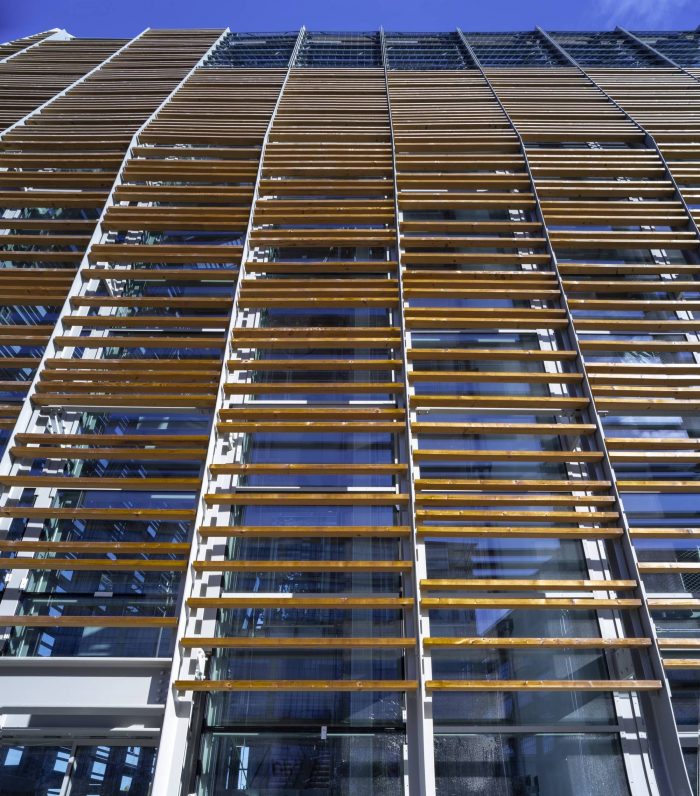
Photography by © Fabio Oggero
The interiors feature traditional materials such as natural lime and wood combined with luxury materials such as leather and velvets. The parquet is made with wood already felled for natural causes and then picked up along the river beds of the Val Varaita.
The painting material neutralizes pollutants, prevents the growth of mold and microbes, and eliminates germs. From the plant engineering point of view, Green Pea offers a broad panorama of the different ways of producing energy through renewable sources: geothermal wells, photovoltaic panels, solar panels, mini wind turbines, smart flowers, up to piezoelectric floors capturing kinetic energy generated by the passage of users.
The plants are intentionally left visible to recall the industrial origins of the site. The combination of these active and passive environmental strategies, aimed at achieving maximum energy efficiency and reducing CO2 emissions, has made it possible to obtain an NZEB (Nearly Zero Energy Building) in class A3.
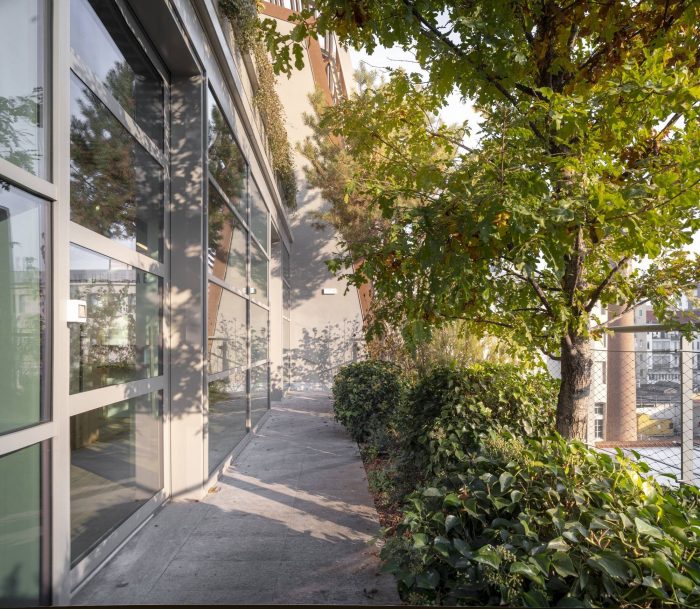
Photography by © Fabio Oggero
Project Info:
Architects: Acc Naturale Architettura, Negozio Blu Architetti
Location: Turin, Italy
Area: 10500 m²
Project Year: 2020
Photographs: Fabio Oggero
Manufacturers: Artemide, Atlas Schindler, Fantoni, Iris Ceramica, Saint-Gobain, Airlite, Cielo ceramica, Enessere, Euroform, Florim, Gessi, Harpo, I Guzzini, Ki Life, L’Isola Blu, Legno e Sole, Saviola Group, Vannucci Piante
- Photography by © Fabio Oggero
- Photography by © Fabio Oggero
- Photography by © Fabio Oggero
- Photography by © Fabio Oggero
- Photography by © Fabio Oggero
- Photography by © Fabio Oggero
- Photography by © Fabio Oggero
- Photography by © Fabio Oggero
- Photography by © Fabio Oggero
- Photography by © Fabio Oggero
- Photography by © Fabio Oggero
- Photography by © Fabio Oggero
- Photography by © Fabio Oggero
- Photography by © Fabio Oggero
- Photography by © Fabio Oggero
- Photography by © Fabio Oggero
- Photography by © Fabio Oggero
- Photography by © Fabio Oggero
- Photography by © Fabio Oggero
- Photography by © Fabio Oggero
- Photography by © Fabio Oggero
- Photography by © Fabio Oggero
- Photography by © Fabio Oggero
- Photography by © Fabio Oggero
- Photography by © Fabio Oggero
- Photography by © Fabio Oggero
- Photography by © Fabio Oggero
- Photography by © Fabio Oggero
- Photography by © Fabio Oggero
- Plan – Ground floor
- Plan – First floor
- Plan – Second floor
- Plan – Terrace
- Plan – Roof
- Section
- Section


